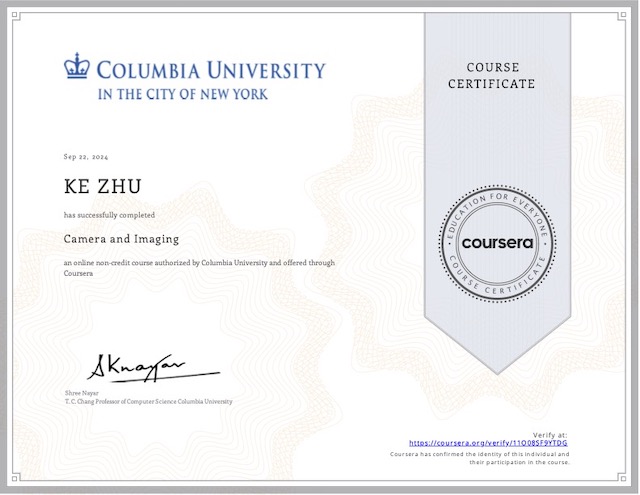It is unusual to think about banking as a system of payments, and central banking as a clearing house. One big picture idea is to think of all of the institutions in monetary system as an attempt to make the system work as if it were one big bank, instead of a bunch of little banks.
The One Big Bank Idea
By one big bank, in the pure money system, we might mean two different things:
- It is holding reserves as assets.
- It has deposits on the liability side (say, two people A and B in this example)
If there’s a payment between A and B, what this is really just moving “stuff” from one account to another (book entry), and not reserves have to move at all. When you run your deposits down to zero, you can’t make any more purchases.
| Assets | Liabilities |
| Reserves | Deposit A Deposit B |
Another one big bank model is a pure credit system, where no reserves are really needed.
| Assets | Liabilities |
| Overdraft C Overdraft D | Deposit A Deposit B |
Depending on the pattern of payments this balance sheet either expands or contracts or nothing happens at all.
| Payment From \ To | A | B | C | D |
| A | 0 | 0 | contracts | contracts |
| B | 0 | 0 | contracts | contracts |
| C | expands | expands | 0 | 0 |
| D | expands | expands | 0 | 0 |
So the one big bank idea is that you want to have a system where mutually beneficial trades can happen. The pure credit system is more flexible, it can do every thing that the pure money system did. Most actual payment systems, and certainly in the United States, are really of the credit character. IMF is an example of the pure money system, however Federal Reserve is an example of the pure credit system.
Multiple Banks: The Constraint
There are thousands of banks in the United States, that operates as if it were a single seamless payment system. Individuals have deposits in banks, however the overdrafts (the credit element) is going to be inter-bank credit. In the real world, the most of the important mechanics are about one bank trading with another bank in the wholesale market. The elasticity in the wholesale money market is what provides elasticity for us in the retail.
The payment between individuals actually makes reserves flow, for example when A pays C:
| Bank 1: Assets | Bank 1: Liabilities | Bank 2: Assets | Bank 2: Liabilities |
| Reserves -$10 | A -$10 B | Reserves +$10 | C +$10 D |
But now the reserves become a kind of constrain, because it is possible that Bank A can not complete the payment when Bank A does not have enough reserves. So not only does Alpha have to have positive deposits, but Bank A has to have positive reserves to complete the payment. This is more of a constraint, than the one big bank.
Correspondent Balances
A bank is collecting and receiving throughout the day various checks (the orders to pay). The bank cares only which bank to pay (the inter bank), it does not care which individual person to pay. Once the payment reaches the target bank, the target bank will deal with individual’s deposit.
When people in Bank 1 pays to other people also in Bank 1, there is no need for reserve flow, the net is zero. When some people in Bank 1 is paying to some people in Bank 2, 3, and 4, that will create obligation of Bank 1 to pay Bank 2, 3, and 4.
| Assets | Liabilities |
| Σ due from Bank 1 Σ due from Bank 2 Σ due from Bank 3 Σ due from Bank 4 | Σ due to Bank 1 Σ due to Bank 2 Σ due to Bank 3 Σ due to Bank 4 |
At the end of the day, the Bank 1 will have the nets. Similarly Bank 2, 3, and 4 has their own nets. They are not moving reserves back and forth across the street every day, that would be a pain. They could just swap IOUs.
| Bank 1’s Assets | Bank 1’s Liabilities | Bank 2’s Assets | Bank 2’s Liabilities |
| Deposit in Bank 2 -$10 | Deposit from Bank 2 Deposit of A -$10 | Deposit in Bank 1 | Deposit from Bank 1 -$10 Deposit of C +$10 |
If Bank 1 needs to pay Bank 2, it can just use its deposit in Bank 2. Now think about when transferring $10 from people A to people C, it just involves:
- debiting A’s account
- debiting Deposit in Bank 2
- debiting Deposit from Bank 1
- crediting C’s account
In this process, the balance sheet of Bank 1 shrinks, the balance sheet of Bank 2 stays the same, because Bank 2 just swap IOUs between Bank 1’s deposit and people C’s deposit. The point is there is no reserves need to travel.
However, the same payment above can be done in other way, by increasing the liability of Bank 1 to Bank 2. In this new way, the balance sheet of Bank 2 expands.
| Bank 1’s Assets | Bank 1’s Liabilities | Bank 2’s Assets | Bank 2’s Liabilities |
| Deposit in Bank 2 | Deposit from Bank 2 +$10 Deposit of A -$10 | Deposit in Bank 1 +$10 | Deposit from Bank 1 Deposit of C +$10 |
These bank balances are called correspondent balances. They make the system of banks work much more like the ideal one big bank operating on a pure credit system. The expansion or contraction depends on the arrangements between the banks. The retail customer has no idea about this. It’s all behind the scenes.
In practice, it was not bilateral between Bank 1 and Bank 2, it is more hierarchical than that. There are some big banks at higher level, say in New York, where all these urban banks have accounts. If Person A is paying Person C, what involves is movement of some account in some big bank that’s in New York somewhere. It was a hierarchical system. That’s where the Clearing House comes in.
Normal Operations of Clearinghouse
The New York Clearinghouse Association is a mutual organization, now CHIPS, and also has its own assets and liabilities. All the big New York banks are members of the organization. Everyone deposits gold, or some other reserves. And the clearinghouse issues Clearinghouse Certificates.
| NYCA Assets | NYCA Liabilities |
| Reserves (say, gold) —– Net due from Bank 1 | Clearinghouse Certificate to Bank 1 Bank 2 … —– Net due to Bank 2 |
These Clearinghouse Certificates represents the deposits of the reserves and sort of stand for the gold. So is is a discipline system right here.
However, during the day, what all of these big banks agree is that “we are going to treat every due from or due to to other members of the clearing house as something that’s due from or due to to the clearing house itself. In other words:
- A bank treats all of the things that it has to pay to other banks as something it has to pay to the clearinghouse.
- All things that a bank is being paid from other banks is something that the clearing house has to pay to the bank.
So every bank is summing it all up and there’s a net “to” the clearinghouse or “from” the clearinghouse. At the end of the day, banks are just exchanging the Clearinghouse Certificates (the liabilities of the clearinghouse). The point is that there’s a credit expansion during the day that creates elasticity and then there’s a settlement at the end of the day. Elasticity and discipline at the very highest level of the system.
These highest level of the system people know that they have access to this and the people lower down don’t. So they are able to sell this elasticity. It spreads, the whole system is elastic and is able to operate as a credit system.
When a bank does not have the Clearinghouse Certificates, it needs to borrow from some member, or even the one who runs the clearinghouse. But suppose no one will lend the bank money because they think actually the bank is insolvent, all of these payments are mutual obligations of all the members of the clearinghouse. So that this reserve goes to satisfy all the banks who are owed money by the clearinghouse, prorata.
So the options for Bank 1 (which is “due from”) includes:
- Pay in clearinghouse certificates
- Borrow from a member
- Default and go away
- Borrow from clearinghouse itself
The last option is how the clearinghouse makes money.
Clearinghouse: Private Lender of Last Resort
In times of financial stress, the banks are in trouble. They all need to make payments in gold. So they all would like to withdraw their account at the clearinghouse. The clearinghouse in times of stress creates money by, not the bilateral borrowing from members, but joint borrowing and lending.
When a bank borrows from clearinghouse, the clearinghouse prints more certificates, i.e. the Clearinghouse Loan Certificates (bearing interest of some number, say 6%), which is the liability of the clearinghouse, and guaranteed by the clearinghouse. The clearinghouse is trying to get all kinds of collateral from the bank to make sure that they repay. Now the balance sheets on both sides are expanded. These clearing house loan certificates begin to circulate among banks as if they were gold.
| NYCA Assets | NYCA Liabilities |
| Reserves (say, gold) Member Loans (6%) | Clearinghouse Certificate to Bank 1 Bank 2 … Clearinghouse Loan Certificate (6%) |
This is what we had in the United States before we had central banking, and we still have it. The New York City clearing house still exists, it still does separate clearing with its members.
The loan certificates are not strictly speaking legal reserves, but in a financial crisis they come to be treated as similar to the clearinghouse certificates which are gold and are legal reserves. These loan certificates are supposed to be liquidated after the crisis.
Ultimately the pressure to get a central bank, came from the fact that the New York bankers were “playing favorites” with each other. And, it seemed like this should be put under some democratic control. They put pressure to change the system. And that’s how we got the Fed, which is basically a clearinghouse.
There’s a sort of strict analogy between a private clearinghouse and central bank (Fed, a public clearing house). They run on the same principles. They have different sets of membership, different rules, different priorities, but the actual mechanics are very much the same.
My Certificate
For more on The Central Bank as a Clearinghouse, please refer to the wonderful course here https://www.coursera.org/learn/money-banking
Related Quick Recap
I am Kesler Zhu, thank you for visiting my website. Check out more course reviews at https://KZHU.ai



